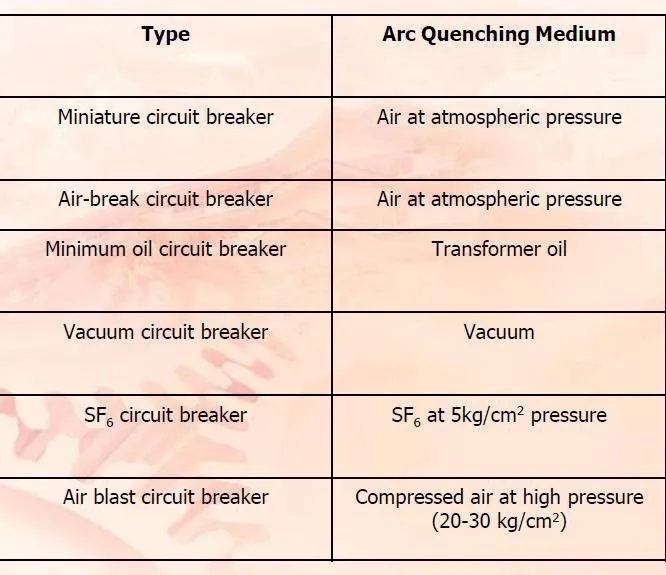If you want to know about the planning of electrical installation or electrical distribution system or introduction of electricity production, please click the link.
Circuits are controlled by a system which is assembled so that the circuit may be operated safely under normal conditions, isolated automatically under fault conditions, or isolated manually for safe maintenance. These requirements are met by good workmanship and the installation of proper equipment such as
- Circuit breakers
- Fuses
- Disconnect switches or isolators
- Capacitors
- Relays
- Contractors
- Starters
1) Circuit Breakers

- A circuit breaker is a switching device capable of protecting the distribution line or feeder connected to it from overloads and faults
- The purpose of a circuit breaker is to break the circuit and stop the current flow when the current exceeds a predetermined value without causing damage to the circuit or the circuit breaker
- If a circuit overload, the mechanism inside the breaker trips the switch and breaks the circuit
- The circuit breaker may be reset by simply flipping the switch
- A circuit breaker is capable of taking harmless short period overloads (such as the heavy initial current required in the starting of a motor of say fan motor) without tripping but protected against prolonged overloads
2) Mechanism & Arc Phenomenon
- Two contacts called electrode remains closed under normal operating conditions When fault occurs on any part of the system, the trip coil of the circuit breaker get energized and contacts are separated
- An arc is struck when contacts are separated The current is thus able to continue Thus the main duty of a circuit breaker is to extinguish the arc within the shortest possible time
- The arc provides the low resistance path to the current and the current in the circuit remains uninterrupted

- Air circuit breakers (ACBs) are breakers where the interruption of the breaker contacts takes place in an air environment.
- Oil circuit breakers (OCBs) use oil to quench the arc when the breaker contacts open.
- minimal arcing (as there is nothing to ionize other than the contact material),
- sulfur hexafluoride (SF6) to quench the stretched arc.

3) Earthing

- The process of connecting metallic bodies of all the electrical apparatus and equipment to huge mass of earth by a wire having negligible resistance is called Earthing
5) Objective of earthing
- Provide an alternative path for the fault current to flow so that it will not endanger the user
- Ensure that all exposed conductive parts do not reach a dangerous potential
- Maintain the voltage at any part of an electrical system at a known value so as to prevent over current or excessive voltage on the appliances or equipment
Good Earthing Means
- Good Earthing must have low impedance enough to ensure that sufficient current can flow through the safety device so that it disconnects the supply 0 4 sec
- Must be of low electrical resistance
- Must be of good corrosion resistance
- Must be able to dissipate high fault current repeatedly
Purpose of Earthing
- To save human life from danger of electrical shock or death
- To provide an alternative path for the fault current to flow so that it will not endanger the user
- To protect buildings, machinery appliances under fault conditions
- To provide safe path to dissipate lightning and short circuit currents
- To provide stable platform for operation of sensitive electronic equipments i e To maintain the voltage at any part of an electrical system at a known value so as to prevent over current or excessive voltage on the appliances or equipment